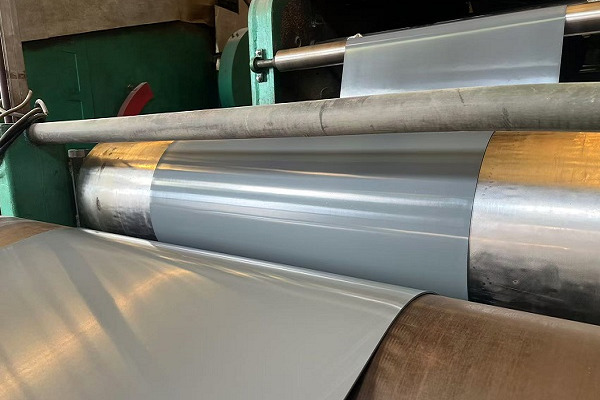
Rubber mats are functional materials mainly made of rubber and are widely used in various fields such as industry,construction,and home.Their core value lies in achieving diverse performance through different formulas and processes,thereby meeting the usage requirements in various complex environments.Behind this seemingly ordinary gasket lies rich material science knowledge and precise production technology.
From the perspective of raw material composition,rubber mats can be divided into two major categories:natural rubber and synthetic rubber.
Natural rubber(NR)is directly extracted from the latex of rubber trees.Its molecular chain structure endows it with excellent wear resistance and resilience.Such products are often used to make the base material of adhesive tapes,the covering layer of conveyor belts,or components of shoe soles,especially in scenarios where frequent bending and deformation are required.For example,the transmission devices on factory assembly lines rely on the good flexibility of natural rubber mats to buffer mechanical vibrations.
The synthetic rubber family presents a more diverse range of characteristics.
Styrene-butadiene rubber(SBR),as one of the earliest industrialized synthetic varieties,has a significant advantage in cost control while maintaining good physical strength;butyl rubber(IIR)is selected as a sealing component due to its extremely low gas permeability;hydrogenated nitrile rubber(HNBR),after special modification,retains its original oil resistance while significantly improving its heat resistance;ethylene propylene diene monomer(EPDM)is the preferred material for outdoor facility protection due to its excellent weather resistance and anti-aging ability.
These different types of synthetic rubbers can precisely control key indicators such as hardness and tensile elongation by adjusting the vulcanization system and filler ratio.

>send emails to sales@jingdongrubber.com,get a quote now
Industrial standards are particularly strict in the quality control of rubber mats.
According to the GB/T5574-2008 standard,manufacturers must conduct low-temperature performance tests on finished products:the samples are placed in liquid nitrogen for at least 15 minutes,and then the dimensional stability is verified using a metal gauge with a precision of 0.1 millimeters and a dial indicator.This rigorous testing process ensures that the product remains intact in extreme temperature conditions and avoids seal failure due to thermal expansion and contraction.
In practical applications,the functions of rubber mats are highly differentiated.
In the construction field,chloroprene rubber(CR)is commonly used to make anti-slip floor mats,taking advantage of its high surface friction coefficient to ensure personnel safety;in chemical workshops,nitrile rubber(NBR)is preferred due to its excellent resistance to solvent corrosion;in the automotive industry,rubber gaskets with a composite structure are often used,which must withstand the high-temperature environment in the engine compartment and effectively isolate vibration and noise.These tailor-made solutions based on working conditions fully demonstrate the designability of materials.
The advancement of modern production technology has further expanded the application boundaries of rubber mats.
Through blending modification technology,conductive carbon black can be uniformly dispersed in the matrix to produce anti-static products;adding flame retardants can form flame-retardant rubber mats that meet the safety standards of electronic equipment rooms;even in the medical field,special surface-treated antibacterial rubber mats are gradually replacing traditional materials.These innovative applications not only enhance the basic performance but also add new value to the products.
It is worth noting that different types of rubber mats require targeted maintenance during use.
Natural rubber products should avoid long-term exposure to environments with high ozone concentrations,while some synthetic rubbers are sensitive to ultraviolet light.Regular inspection of surface cracking and measurement of thickness changes are effective measures to extend service life.For parts subjected to dynamic loads,it is recommended to establish a periodic replacement system to ensure safety protection effects.
Jingdong Rubber Co., Ltd. is a professional rubber sheet manufacturer, producing silicone rubber sheet, natural rubber sheet, fluorine rubber sheet, neoprene rubber sheet, insulating rubber sheet,EPDM rubber sheets, oil-resistant rubber sheets, anti-static rubber sheets, flame-retardant rubber sheets, conductive rubber sheets, anti-slip rubber sheets, and cowshed mats, etc. with 40 years of industry experience, are popular both at home and abroad. If you need any of our products,please send emails to sales@jingdongrubber.com.

